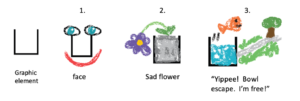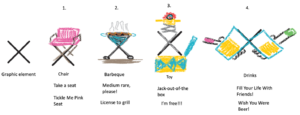CAP (Creativity Assessment Packet) Test
The Creative Assessment Packet (CAP) Test is a group assessment used to evaluate students in grades 1 – 12 for creative abilities. These are different from cognitive abilities that are evaluated on IQ tests or academic skills assessed on state achievement tests. The CAP Test focuses more on divergent vs. convergent thinking.
There are 3 instruments used for the CAP Test assessment.
1. The Williams Scale – both parents and teachers are asked to evaluate each individual student with a checklist of questions. These questions ask about a child’s behavior in the following areas (areas that research has shown are consistent with creativity):
2. The Exercise in Divergent Feeling – this is a checklist filled out by the student. These 50 questions will assess the student’s feeling about their own feelings and behaviors and correlate them with creativity. It asks questions that get to many of the qualities described in The Williams Scale. For example, it might ask a question like, “I like to think of new solutions to problems that nobody else has ever thought of.” That would relate to a child’s self-assessment of how original their thinking is. There are options meaning yes, maybe, no, or can’t decide. The child should avoid the “can’t decide” option as this results in negative points that could take away from their creativity score. The student should really try to think about how accurately the statement describes them and make a definite answer choice.
3. The Exercise in Divergent Thinking – This is an exercise where students are presented with 12 boxes, each containing a graphic squiggle or figure. They are asked to work in order box-to-box making original pictures that incorporate the graphic element in ways that are unexpected. Then, they are instructed to give their picture a unique title or caption. They can draw their pictures using pencils or colors. The drawing of the picture is a spatial activity. The writing of a thoughtful title is a verbal activity. Therefore, this exercise assesses both spatial/non-verbal and verbal abilities of creativity, taxing both sides of the brain. Students in grades 1 – 3 have 25 minutes to complete their drawings. Students in grades 4 – 12 have 20 minutes to complete their drawings. Each of the 12 drawings and titles is scored on fluency, flexibility, originality, elaboration, and the title.
Here are a few examples:


Titles – from Least to More to Most Creative

Tips and Tricks for Creativity Exercises:
- Encourage your child to think of different types of pictures to draw from image to image. Mix up animals, machines, symbols, landscapes vs. creating all animals or people pictures.
- If your child stays entirely within the graphic stimulus or entirely outside the graphic element, embolden them to try making pictures that are both inside and outside of the graphic element – The picture should integrate the figure, but also surround it completely and fill up the graphic stimulus.
- Add details to your picture to enhance it and make it more interesting.
- Aim to make pictures that are asymmetrical inside and outside of the graphic figure.
- Avoid titles that are one-word labels of what the image is. Go for titles that tell us more about the thinking behind the picture. Aim for humor, puns, story, emotion, hidden meanings, and titles that aren’t obvious.
Want to try us out? Sign up for a free account today and get 100 practice questions.
See if TestingMom.com supports your child’s test by your school district. If you don't see your child's school district listed, check with us! We have practice for other tests as well.



Tell us about your experiences